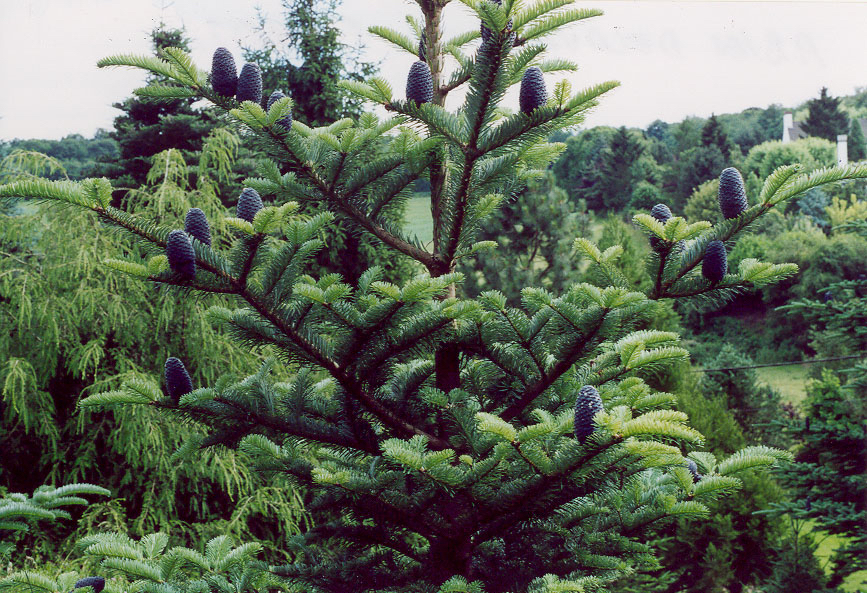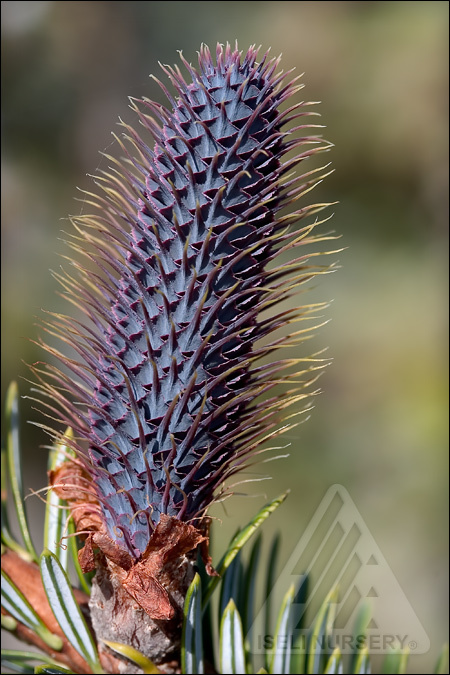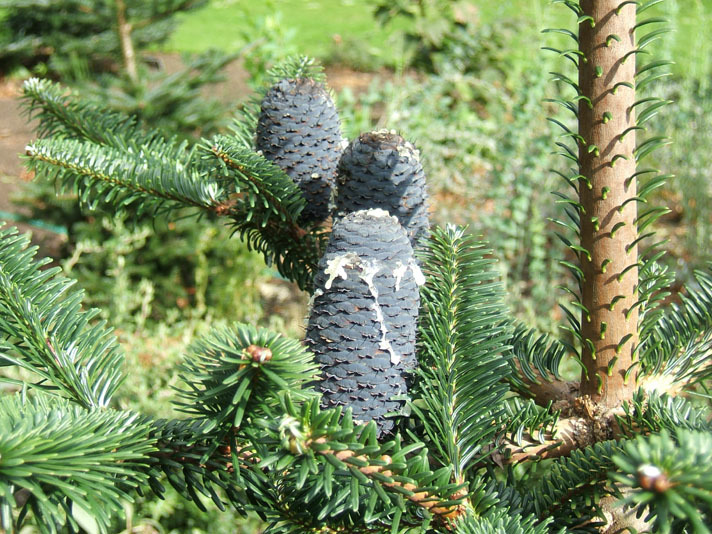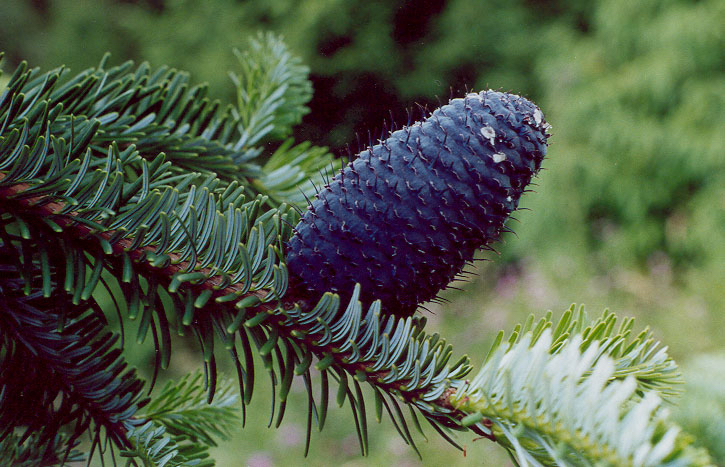Abies forrestii, as described in 1919 by C. Coltman Rogers, in The Gardeners' Chronicle: a weekly illustrated journal of horticulture and allied subjects. series 3 number 65 is commonly known as Forrest's fir, as well as Š·æ»‡Š†·æ‰ (ChuÄn diÄn lÄ›ngshÄn) in the Chinese language. It was named after George Forrest (1873 - 1932), a Scottish botanist, who became one of the first explorers of China's then remote southwestern province of Yunnan, generally regarded as the most biodiverse province in the country.
In 2010 Aljos Farjon designated four varieties of Abies forrestii in his book, A Handbook of the World's Conifers:
Description. Forrest fir is an evergreen coniferous species of tree which will grow to a mature heights of 130 feet (40 m) tall with a trunk up to 60 inches (150 cm) in diameter, measured at breast height with a straight, round trunk and broadly conical crown.
Distribution. This species is native to China and Tibet - northwestern Yunnan, southwestern Sichuan and southeastern Xizang (Tibet) provinces in high mountains of 7,700 to 14,000 feet (2,400 - 4,300 m) above sea level. The climate is cold and wet with annual precipitation of 40 to 80 inches (1,000 - 2,000 mm), producing gray-brown podzol soils. It is typically found in pure stands near tree limit.



